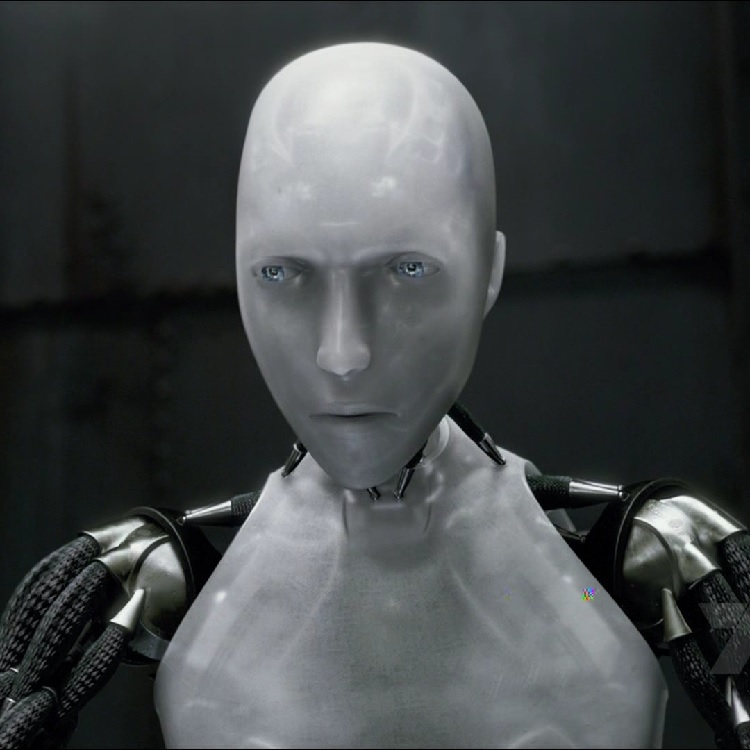7D7

7D7 KLH-M89
Race: Droid
Sex: Male
Occupation: Courier
Profession: Bartender
Homeworld: Miv-32 Asteroid Cluster
| Species: Droid | Gender: Male | Age: 49 |
| Height: 6'5" / 195.5m | Weight: 111 lb / 50.3kg | Eye Color: Blue |
| Hair Color: None | Skin Color: None | Handedness: Right |
Description
M89 Model
They built these things to last and to look approximately humanoid. With translucent skin and the barest of visible endoskeletal chassis visible, the entire production line is able to pass, in a vague sense, for humans with pale skin and bright eyes. They stand approximately six foot five, with most of them weighing close to one-hundred ten pounds, give or take. Oddly enough, the entire product line tend to wear simple, unassuming clothes, usually jumpsuits or the like, and some even go far enough afield as to wear shoes or a hat.
In the case of 7D7, it's a dip into both columns: his outfit, such as it is, is a simple and flat-grey jumpsuit with a stylized swirl on the left breast pocket in faded neon red tones. His face is placid, if not interacted with, and animates easily and easiest to a smile, with deeply expressive cheeks and lips, and at some point, painted-on single-position eyebrows. On his feet are standard-issue flight mechanic boots from some discontinued product line, likely from from a deep-space colony or failed venture in commerce. Regardless, he's also seen in a low-slung wide-brimmed hat, usually dull grey, like his jumpsuit. Strange droid.
About the Design
Mercury Line
KLH Foundries took on a contract by an independent designer seeking to make a substantial dent in the growing service and protocol droid market. What they submitted was 99% finished and the remaining 1% of code was left to the production team to resolve - which they did, by leaving it cross-wired to anything adjacent to its placement.
This resulted in not only free-willed models, it produced a healthy degree of self-serving interests, as well. With that self-interest in full vogue, the individual units could, and did, engage in self-preservation modes most models similar to them did not, or simply could not, and a select few could even drift far enough from their core programming to avenge themselves.
One notable incident involved a unit which was hurled from an airlock during a pirate raid on a vessel carrying 46 droids; once discharged into the debris field of a nearby hull wreck, the unit waited until such time as a passing refitted freighter serving as a party-vessel was near and engaged them in polite, if insistent, requests to come aboard, and was granted such. Said unit took on a role and function of a bartender aboard the ship, and served until it made port in Coruscant, whereupon it took its wages and hired a bounty hunter to track down the vessel which originally abandoned it.
After finding it and sneaking aboard, the unit then proceeded to cause the onboard computer cores to self-analyze on a timed basis, removing all user-inputted command prompts from availability, and then hit the distress beacon before departing for the bounty hunter's craft, leaving the area before pirates noticed the doomed freighter. That unit, of course, was designated as 7D7, last survivor of the Viceroy of the Skies hauling ventures, shortly before the owner-operator was killed by pirates near the edge of Yavin space.
About the Manufacturer
KLH Foundries
Six years after the release of the Mercury line for the M89 droids the company went bankrupt due to lawsuits filed against them for failure to provide quality products on budget and within the guidelines for scheduled deliveries. The 7D series, while not exactly perfect, were just a late-series symptom of the ongoing issue with keeping good, quality engineers employed and happy. As a rule, they could do one of the two, at the most, and never for very long.
They produced small batches of communications equipment, most of which is no longer in serviceable condition, as well as long-range scanning gear, none of which survived the first decade of service once the company was shuttered. Their factory in the Miv-32 Asteroid Cluster remained operational for two years after the company-wide shutdown in 1115, and the workers who remained were all 7D model droids, producing as many spare parts as was possible, even sacrificing the entirety of the factory's life support, environmental control, and long-range communications equipment and materiel to grind them into further materials for their own safeguarding. This has allowed the market for 7D droid parts to continue existing, and the prices kept semi-stable.
Gallery

